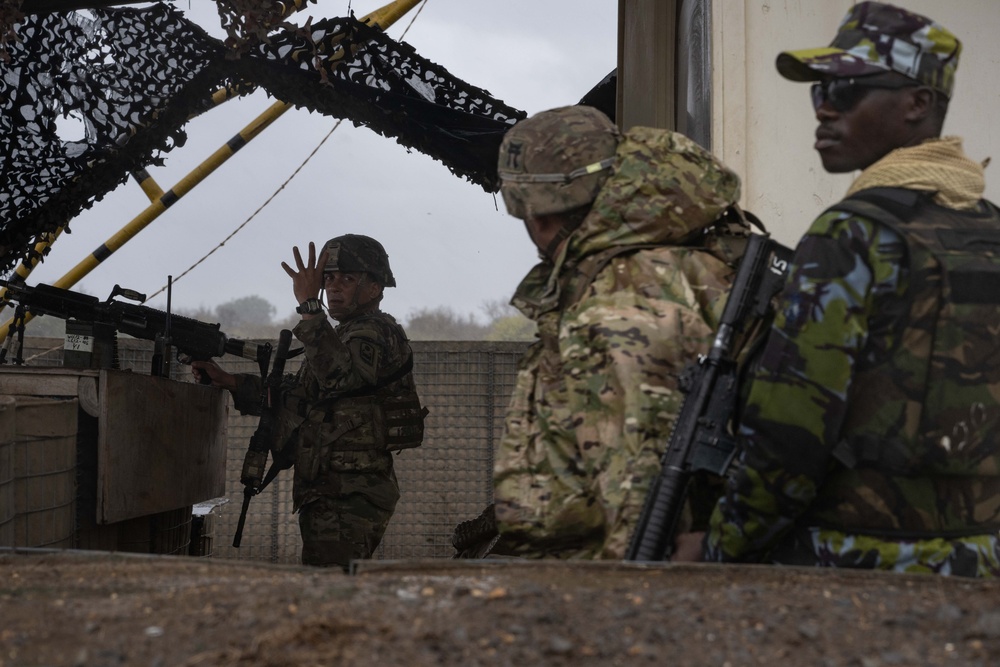DVIDS – News – Automobile Accident Kills Army G-2 in Troubled Panama (26 FEB 1989)
by John DellaGuistina, MI Corps Association Historian
AUTOMOBILE ACCIDENT KILLS ARMY G-2 IN TROUBLED PANAMA
On Sunday afternoon, Feb. 26, 1989, Col. Gerald E. Clark, Jr., the U.S. Army South (USARSO) G-2, left his office at Fort Clayton to attend a meeting in downtown Panama City at the Panamanian Defense Force (PDF) headquarters building, known as the Comandancia. Soon after leaving the base, a car coming from the other direction passed a truck in front of the Corazal Cemetery and slammed head-on into Clark’s car, killing him. Although the USARSO investigation later characterized the collision as an accident, many suspected Clark’s death may have been directed by Panamanian leader Manuel Noriega.
Born in Puerto Rico, Gerald Clark was one of the Army’s foremost Latin America foreign area officers. Raised in the region, Clark spoke fluent Spanish and personally knew many of the key figures across Central America. During the Vietnam War, he had served as an MI aviator, earning thirty-four Air Medals. After teaching Spanish at West Point and serving at the Pentagon, he had been the Army attaché in Honduras and subsequently the commander of Army forces, Joint Task Force Bravo, in that country. He earned the name “Contra Gerry” for his steadfast support of the militia group fighting against the Marxist government in neighboring Nicaragua.
In August 1988, Colonel Clark arrived in Panama and was dual-hatted as the USARSO G-2 and the military advisor to the assistant secretary of state for Latin American affairs. Clark had also been in Panama during April and May, advising State Department Envoy Mike Kozak’s direct negotiations to have Noriega step aside as Panama’s leader.
Noriega’s increasingly autocratic behavior had destabilized the security situation in Panama for several years. In June 1987, a former Panamanian Defense Force (PDF) leader accused Noriega of the 1985 murder of an opposition leader and the 1983 plane crash that took the life of dictator Omar Torrijos. The Panamanian people protested in the streets until Noriega’s riot police ruthlessly crushed the unarmed demonstrators. In the aftermath, the U.S. Senate passed a resolution calling for Noriega to step down. In February 1988, federal judges in Florida indicted Noriega and several associates on drug trafficking charges. In response, Noriega obstructed U.S. rights given in the 1977 Panama Canal treaties, strengthened his internal security apparatus, and began to actively harass American citizens and service members assigned there. In mid-March 1988, a PDF element attempted a coup to depose Noriega but failed. Again, Noriega retaliated by declaring a national state of emergency, suppressing political opposition and labor strikes, and ramping up anti-American harassment using roadblocks, searches, and travel restrictions. U.S. President Ronald Reagan immediately began sending additional troops to enhance U.S. forces and family members’ security.
The situation in Panama remained tense throughout 1988. In May, during Envoy Kozak’s negotiations with Noriega, the U.S. offered to drop criminal charges in return for his exile to Spain. Noriega initially accepted the deal but then reversed his decision and refused to step down. In late January 1989, George H. W. Bush became the U.S. president after eight years as Reagan’s vice president. Bush had adamantly opposed negotiations with Noriega and a confrontation with the intransigent dictator became more likely.
A month later, the death of Colonel Clark occurred under suspicious circumstances. The speculation was Clark’s seat belt malfunctioned, causing him to slam into the steering column upon impact. The two individuals in the other vehicle walked away from the accident after a short visit to the local hospital.
U.S. Senator Alfonse D’Amato, a Democrat from New York, heard about the circumstances of Colonel Clark’s death. In May 1989, he questioned Chief of Staff of the Army General Carl Vuono and Secretary of the Army John Marsh when they testified before his Senate subcommittee. D’Amato believed Clark may have been murdered and asked whether he had also been mugged the day before his death. The next day General Vuono provided an excerpt of the investigation report, summarizing that his death was due to the car accident. Vuono added a paragraph that stated, on Saturday, Feb. 18, while walking in Panama City, Clark had his small carrying bag stolen by an unknown assailant. Due to his duties at the U.S. Embassy and because his family did not accompany him on the assignment, Clark chose to live in an apartment in downtown Panama City. Secretary Marsh added, “Colonel Clark was an extraordinary officer and many…considered him to be the most knowledgeable military expert on Central America. I had a very high regard for him.”
Given the turbulent situation and theater indications/warning criteria, the death of Colonel Clark might have triggered a U.S. military intervention. However, in March 1989, U.S. Southern Command and its service components were not adequately prepared to conduct large-scale combat operations against Noriega and his loyal security forces. Additionally, President Bush’s recent inauguration caused his administration to proceed cautiously. Throughout 1989, the security environment in Panama continued to deteriorate, leading to the launch of Operation JUST CAUSE on Dec. 20, 1989. On Jan. 3, 1990, American forces captured and extradited Noriega to the U.S., restoring stability and security to troubled Panama.
New issues of This Week in MI History are published each week. To report story errors, ask questions, request previous articles, or be added to our distribution list, please contact: TR-ICoE-Command-Historian@army.mil.
| Date Taken: | 02.21.2025 |
| Date Posted: | 02.21.2025 13:56 |
| Story ID: | 491240 |
| Location: | US |
| Web Views: | 1 |
| Downloads: | 0 |
PUBLIC DOMAIN
This work, Automobile Accident Kills Army G-2 in Troubled Panama (26 FEB 1989), must comply with the restrictions shown on https://www.dvidshub.net/about/copyright.


 Private Internet Access gives you unparalleled access to thousands
of next-gen servers in over 83 countries and each US state. Your
VPN experience will always be fast, smooth, and reliable.
Private Internet Access gives you unparalleled access to thousands
of next-gen servers in over 83 countries and each US state. Your
VPN experience will always be fast, smooth, and reliable.